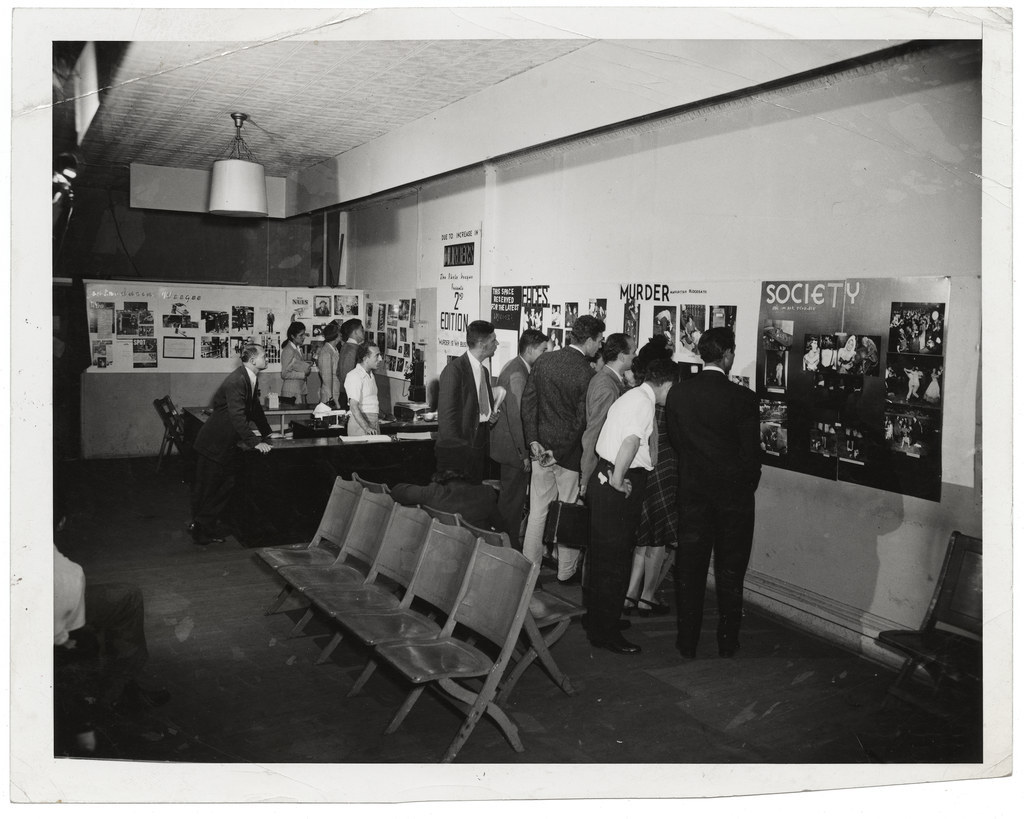"Weegee" was the pseudonym of this guy with the humble photo captions.
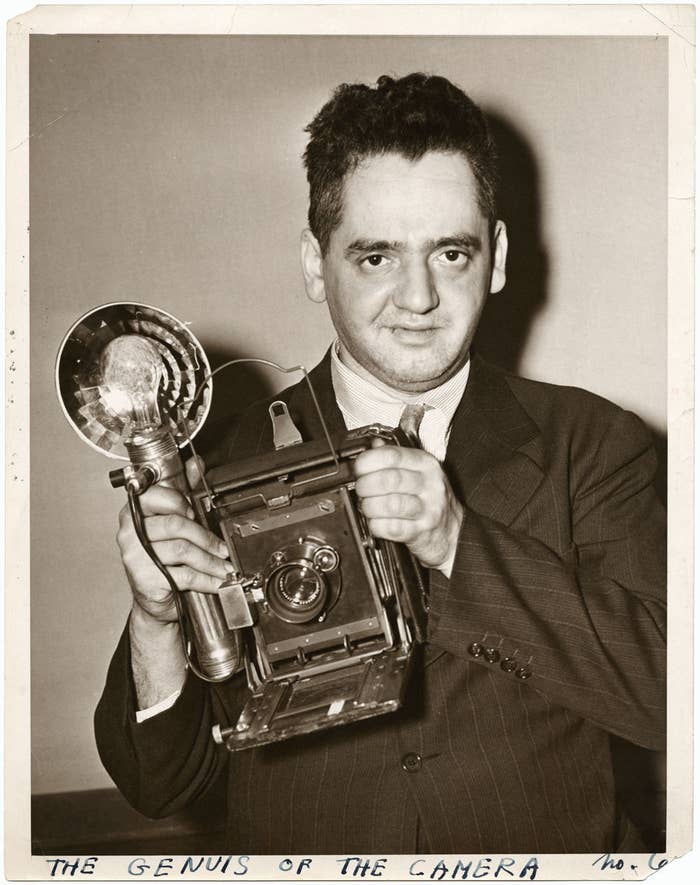
His real name was Arthur Fellig, and he rose to prominence as a tabloid news photographer in the 1930s. The end of the Depression, the repeal of Prohibition, and a governmental crackdown on organised crime meant there was a huge surge in the rate of murders and violent crime in New York City.
He documented the victims of one of the largest and most prolonged crime wars in US history.
Hundreds of bodies, hundreds of stories.
To quote the guy himself: "Murder is my business."
Body of gambler/bookmaker/gangster Dominick Didato, New York, 6 August 1936. Killed in an efficient and expertly executed mob hit. No witnesses came forward, and the murder was never solved.
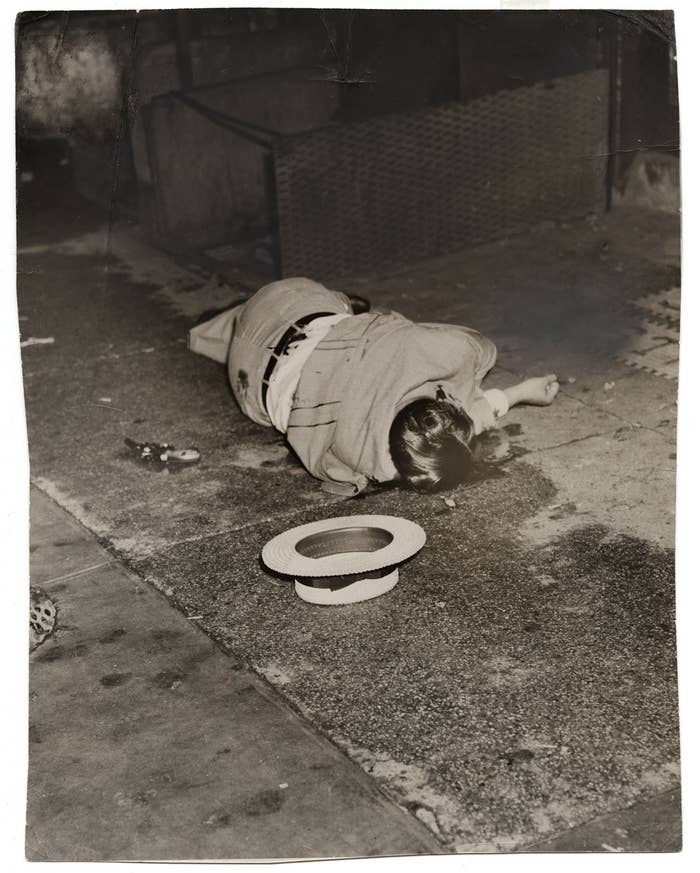
Weegee got his nickname from back when he was on the lowest rung of the photography lab: the squeegee boy, whose job was to dry the prints before bringing them to the newsroom.
By 1945 he was signing his work "Photo by Weegee the Famous".
Weegee at work next to the body of David "The Beetle" Beadle, 9 December 1939. This photo was taken by an unidentified photographer and the murder was never solved. Detectives suspected it was the result of a disagreement over control of the docks.
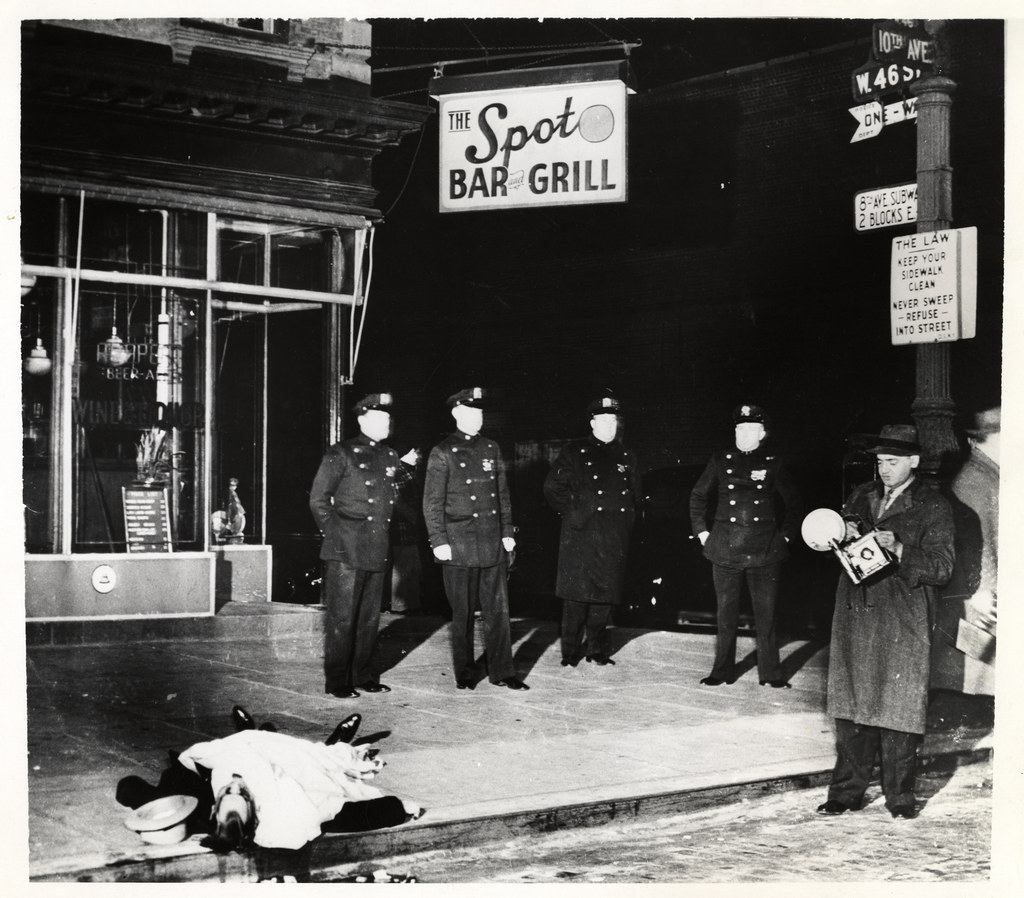
He said:
My camera seemed to be deadly as far as gangsters were concerned. Once I had photographed them alive I always had to pay a return trip to photograph them when they were finally bumped off. They usually landed in the gutter, face up, in their black suits, shiny patent leather shoes with pearl grey hats.... dressed to kill.
No bumping off was official until I arrived to take the last photo, and I tried to make their last photo a real work of art.
Fire rescue. 19 March 1941.
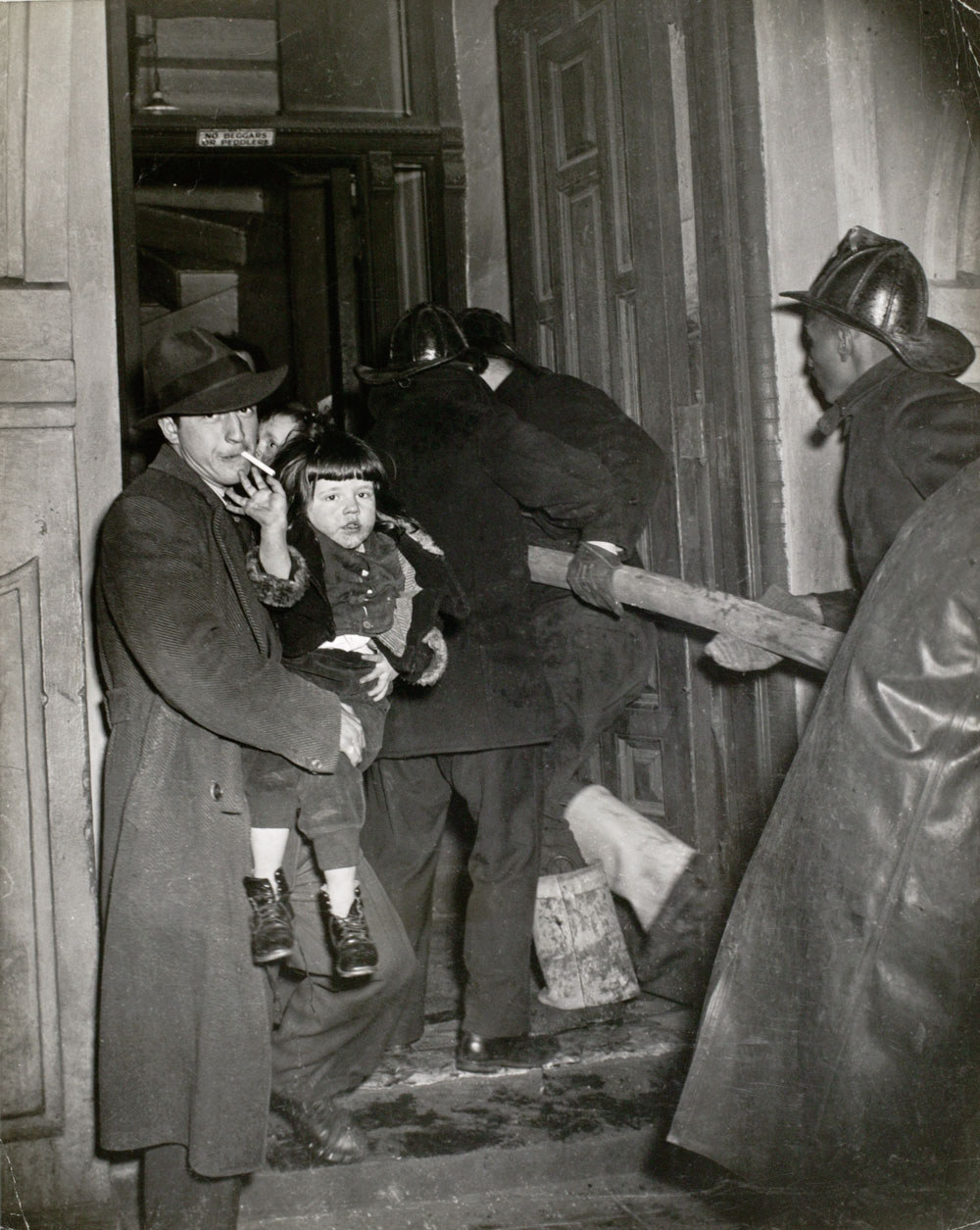
Weegee was the only newspaper reporter with a permit to be on the police radio frequency. He'd hear about the crimes as they were called in, and would arrive at the scene at the same time as the sirens.
Sometimes he beat them to it.
Weegee at his typewriter in the trunk of his 1938 Chevy. New York, 1943.
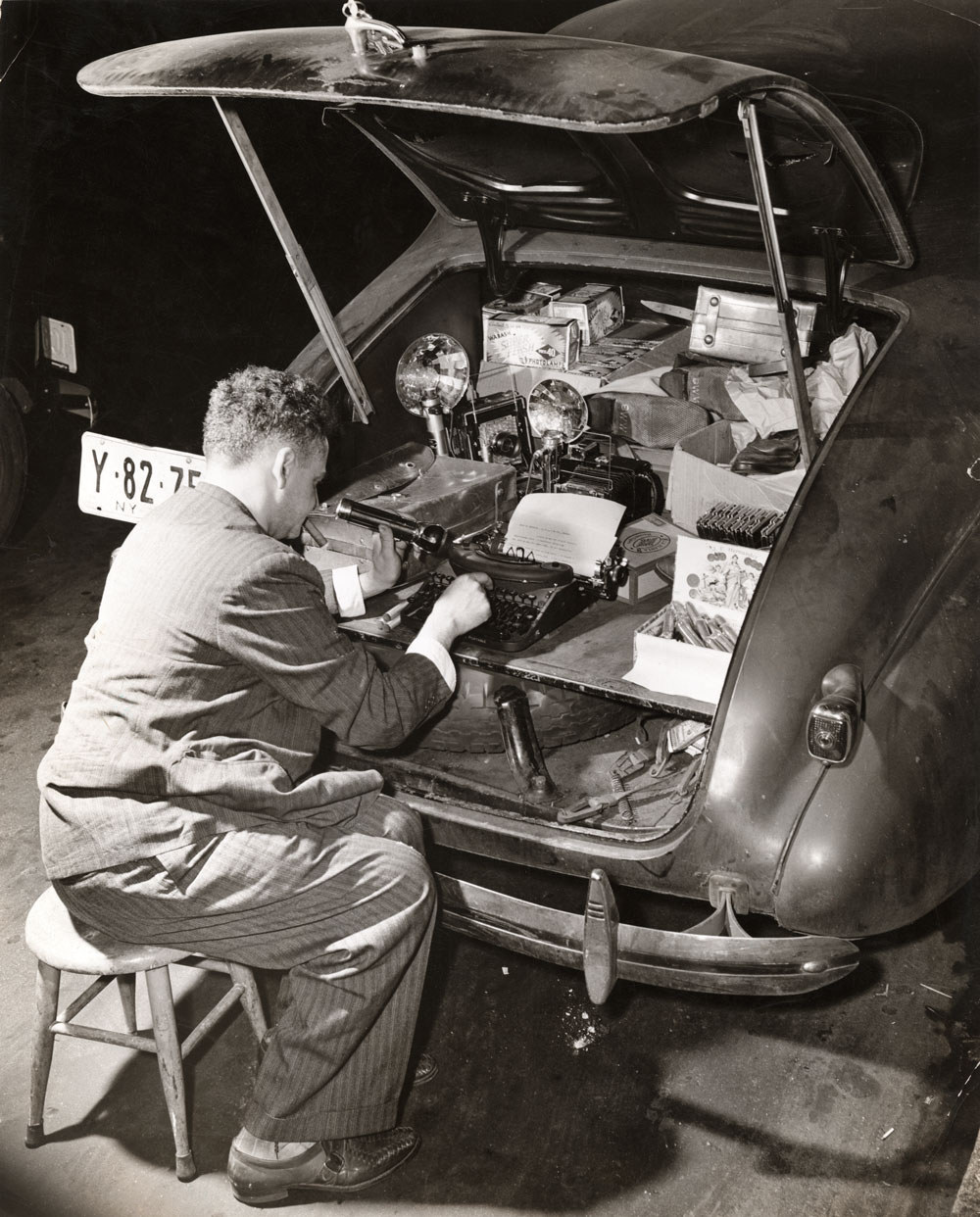
He would arrive at the scene in his Chevrolet Coupe, with a fully equipped trunk filled with everything a freelance news photographer needed: extra cameras, a box of flashbulbs, film holders, flashlights, a typewriter for captions, an extra pair of shoes, and cigars.
There's a story that he had a darkroom in there as well. But that's just Weegee legend.
Ice-covered firefighters extinguishing a fire, Coney Island, Brooklyn. 1 January 1940.
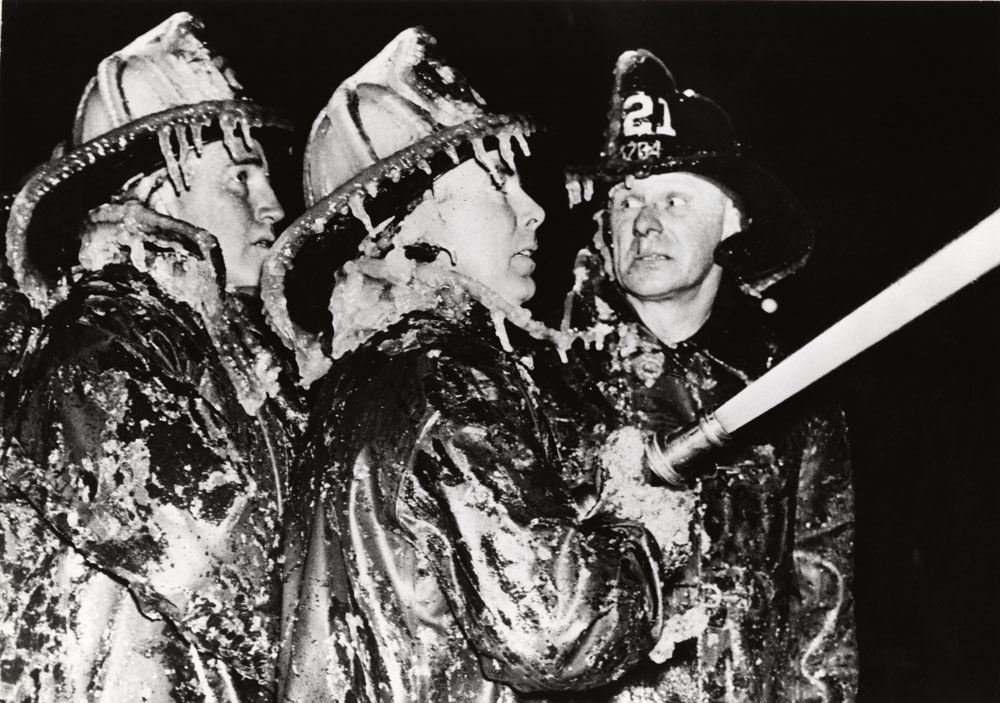
In the early 1930s, the parameters of the freelance news photographer were still being figured out. It was already considered one of the roughest occupations in the industry, requiring anyone who did the job to be on call 24 hours a day, ready to go to bars and whorehouses, wherever the bodies turned up. The job gained a reputation for attracting men and women who couldn't get anything better.
It was a new occupation and Weegee's version of it produced a distinctly new genre of photography: sensationalistic, forensic, a raw portrait of Depression-era urban disorder.
Police officer and assistant removing body of Reception Hospital ambulance driver Morris Linker from the East River, off Welfare Island. He had swerved to avoid a pedestrian. 24 August 1943.
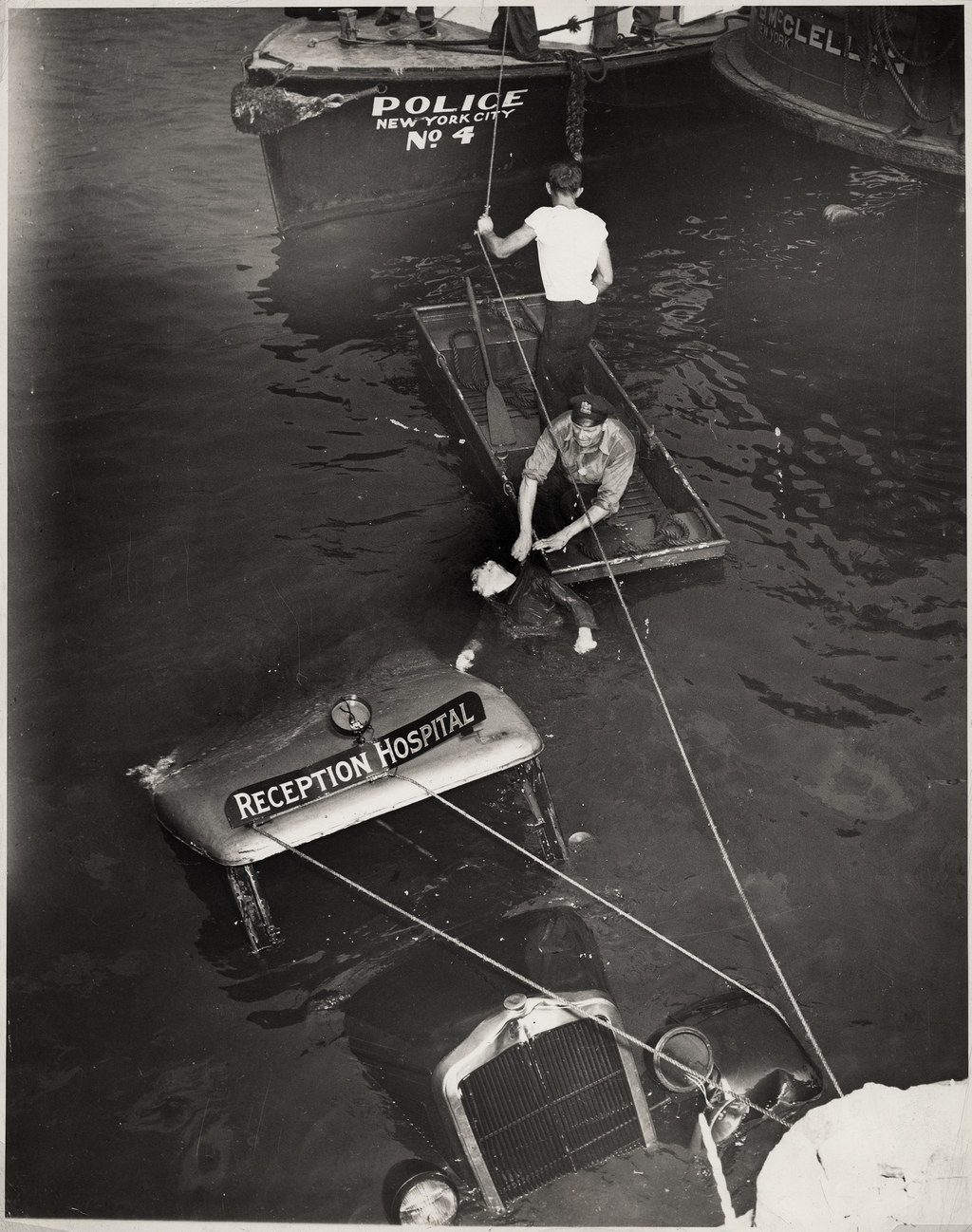
Weegee said:
I didn't wait 'til somebody gave me a job or something, I went and created a job for myself — freelance photographer. And what I did, anybody else can do. What I did simply was this: I went down to Manhattan Police Headquarters and for two years I worked without a police card or any kind of credentials. When a story came over a police teletype, I would go to it. The idea was I sold the pictures to the newspapers. And naturally, I picked a story that meant something.
Landlord Henry Geller weeping over the loss of his first-floor tobacco shop, which was destroyed by fire. 27 July 1941.
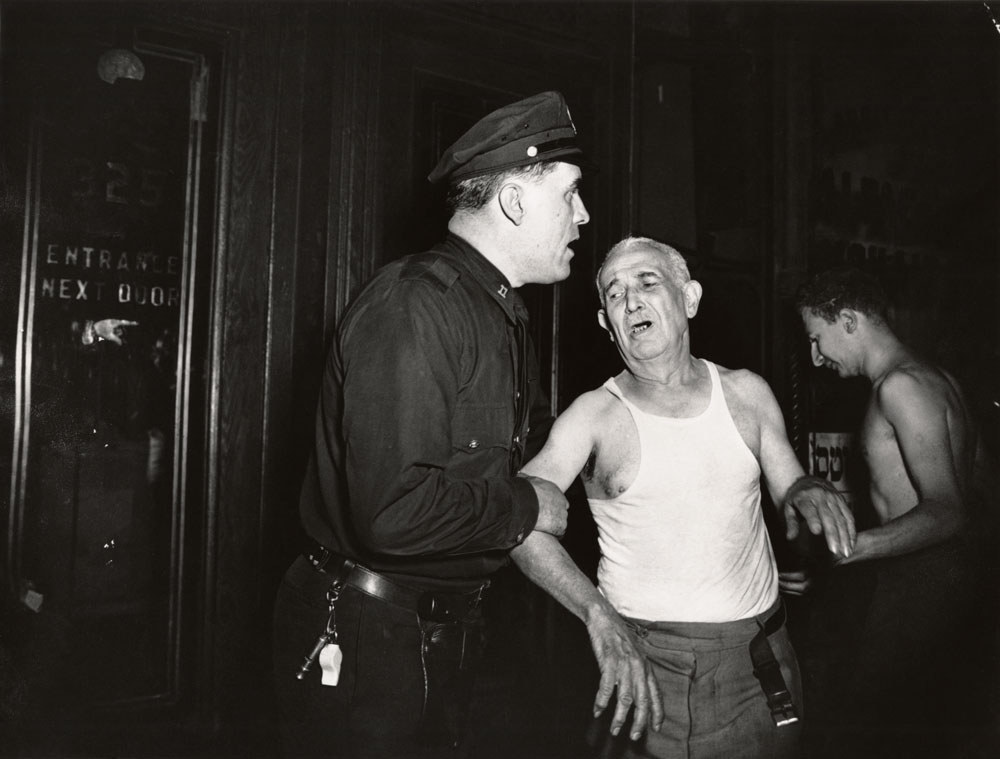
Not everyone got what he was trying to do.
I try to humanise the news story. Of course I ran into snags with the dopey editors. If it was a fire, they'd say, "Where's the burning building?" I says, "Look, they all look alike." I says, "Look, here's the people affected by the burning building." Well, some understood it and some didn't.
Murder, 1940.
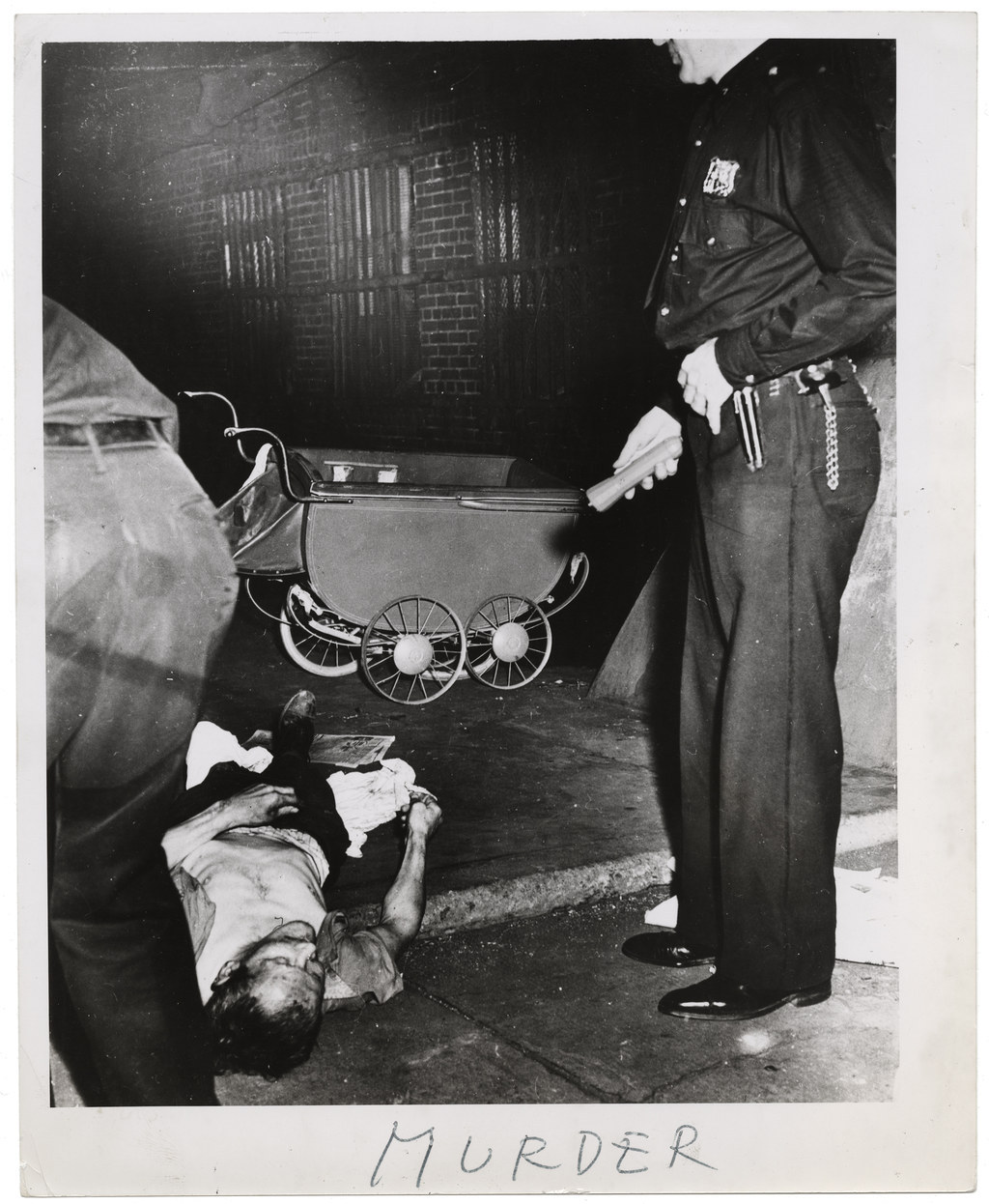
He lived in a shabby studio at 5 Centre Market Place, across the street from the headquarters of the New York City Police Department. He pinned the trophies of his success around the single room: torn-out pages from newspapers featuring his work.
Dead bodies lined the walls.
Body of a girl hit by a car on Park Avenue, New York. 1938.
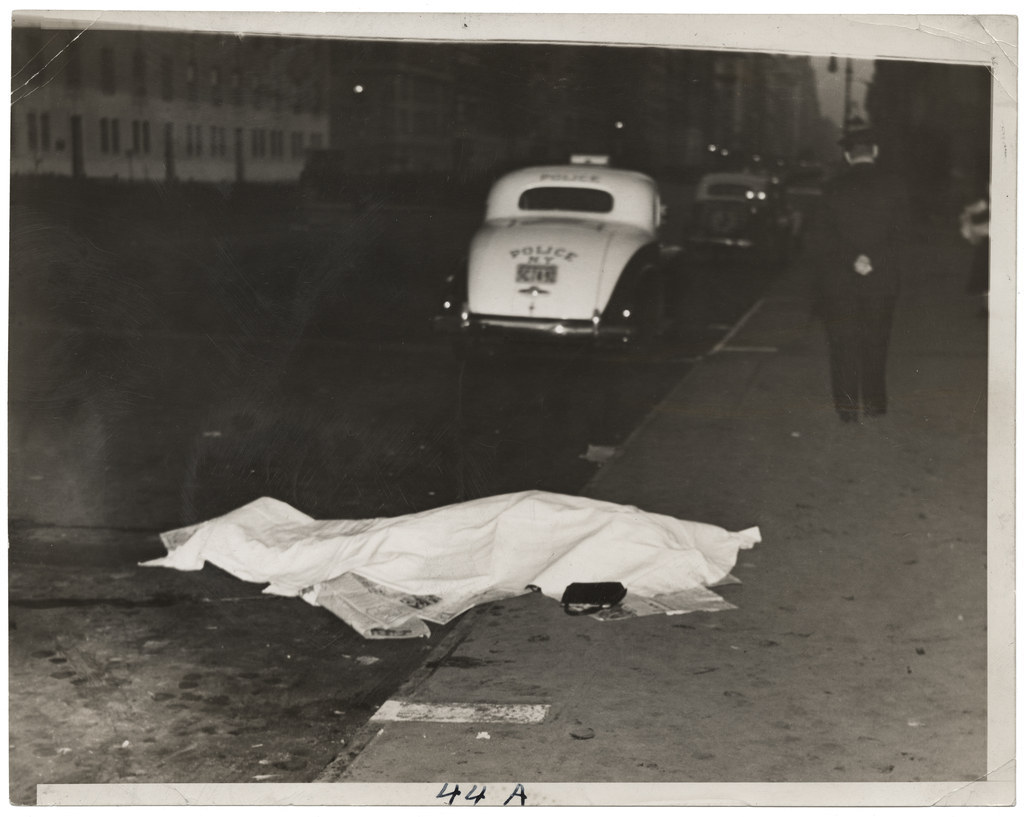
Working around Police Headquarters, which was my home, I got to know the cops pretty well. If they wanted a quiet little snooze they'd use my studio. Sometimes they'd forget their guns so I'd have to go chasing all over town for them. I'd go out with them on stories.
Wife of a murder victim collapses in the arms of policemen after arriving at the scene. 1940.

Sometimes there would be an impromptu line-up and the victim would try and identify the criminal. Sometimes they'd pick me out. I would holler, "Look, I only take murder pictures, I don't commit them."
Line-up for Night Court, ca. 1941
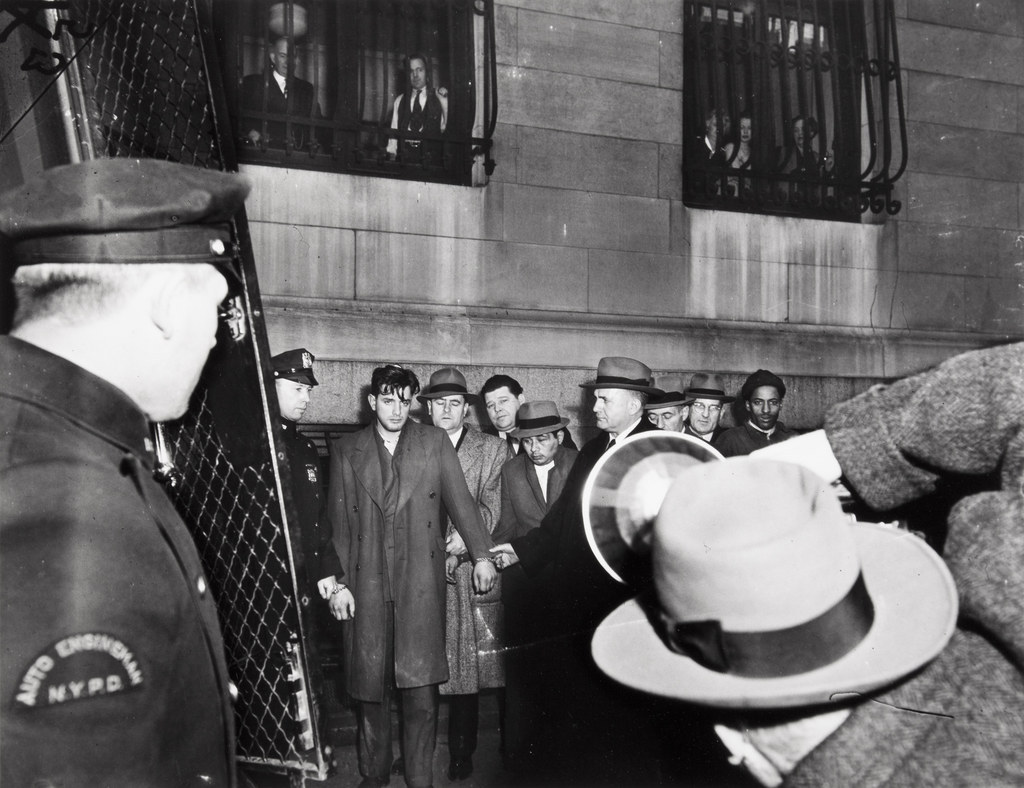
Underneath my studio was a rifle range where the cops practiced their marksmanship. When I went to sleep in the morning it was to the lullaby of singing bullets.
Anthony Esposito, booked on 16 January 1941 with his brother William, on suspicion of killing a policeman after a botched robbery. The tabloids called them the "mad dog" killers. They went to the electric chair in 1942.

Sometimes there would be a drop in crime, which the cops didn't like. No crimes meant no pictures of the cops with the prisoners in the papers. But soon things would get back to normal.
Police examining the body of a man in a hold-up situation. 24 November 1941.
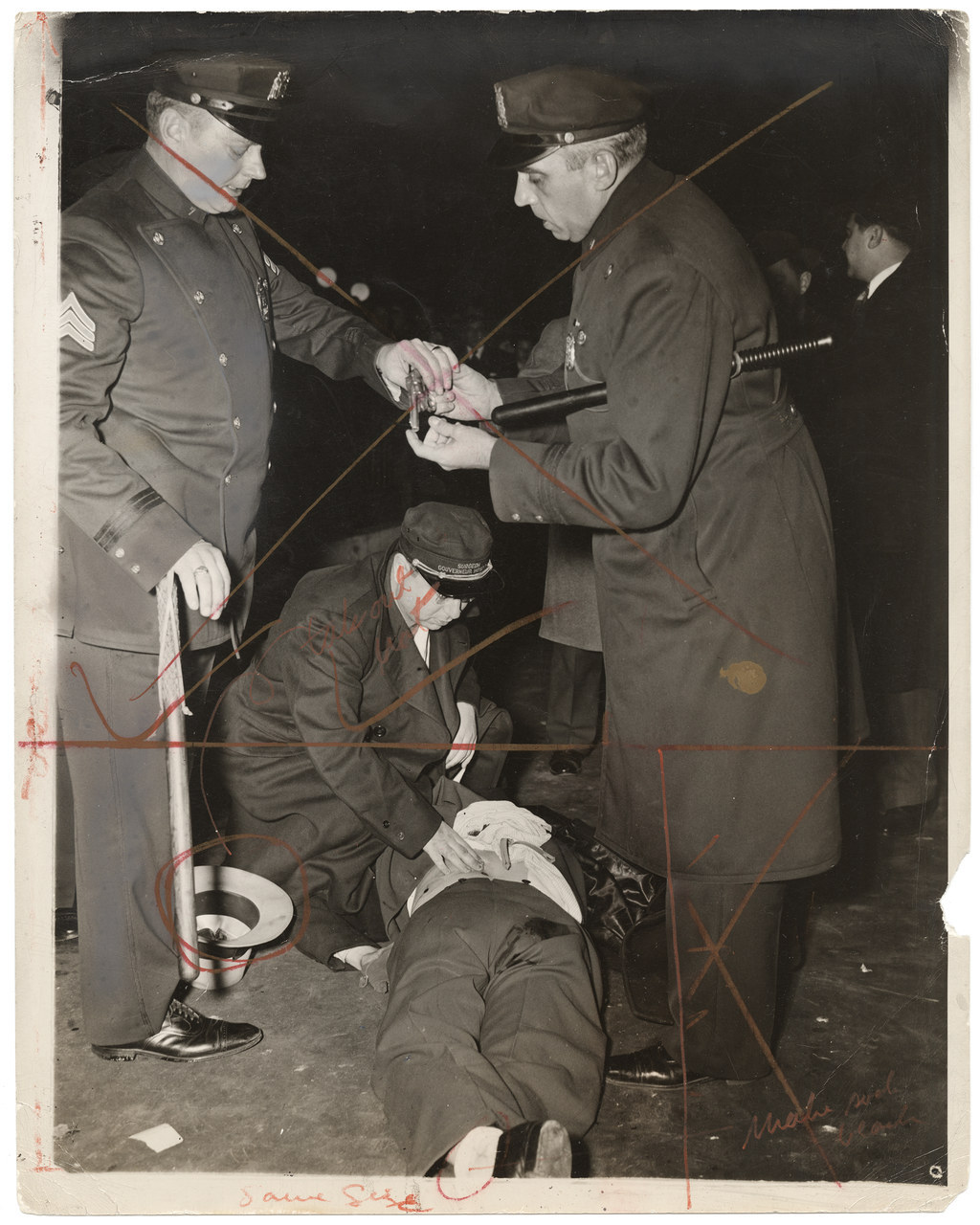
I would take the pictures, making sure to get the cop's full name spelled out right for the captions, unless I was mad at them, then I would deliberately misspell it. And that was the tip-off for the cop to get back into my good graces by giving me a handful of cigars.
Onlookers, 1943.

Working the night beat, Weegee had to specialise in flash photography, a new approach that produced both the gritty, high-contrast pictures he became known for, and the wide-eyed, startled expressions of the onlookers who couldn't walk past a crime scene.
He never photographed the action, just the immediate aftermath.
Hats in a pool room. 1943.
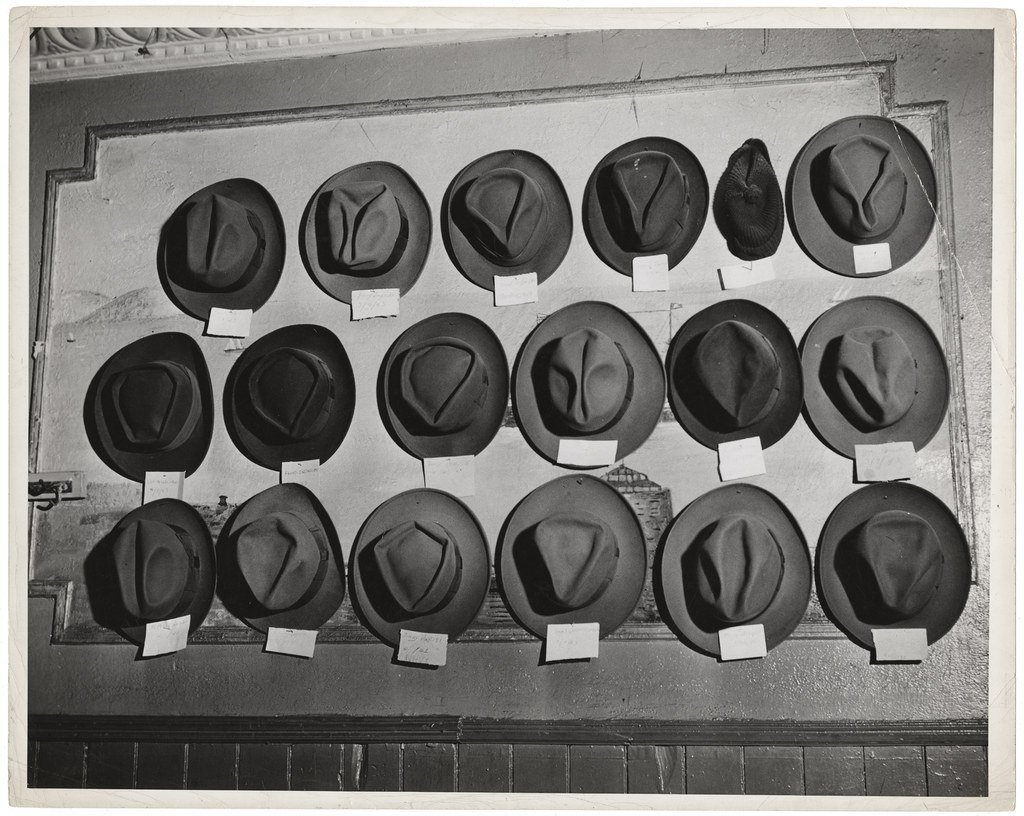
He said:
The easiest kind of a job to cover was a murder because the stiff would be laying on the ground. He couldn't get up and walk away or get temperamental. He would be good for at least two hours. At fires you had to work very fast.
Crime reportage was all about seeing the body. Newspapers wanted to show formerly threatening gangsters as thoroughly deceased and punished.
An exhibition of Weegee's work at The Photo League, 1941.
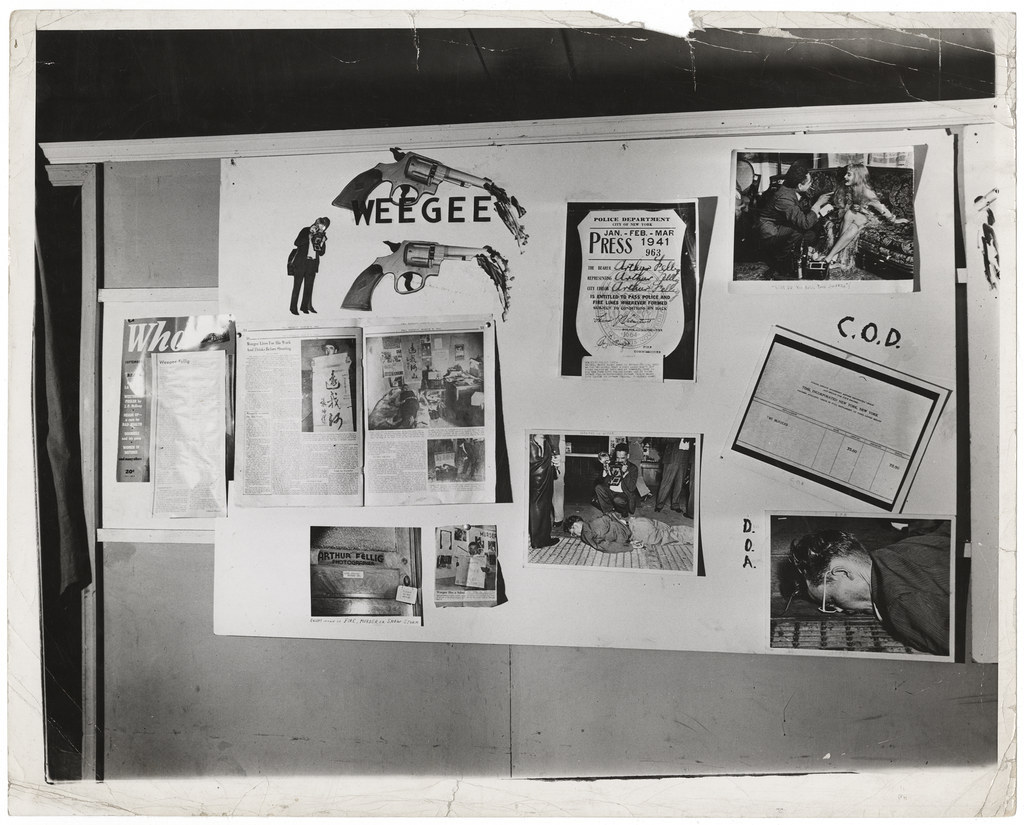
In 1933, an organisation called The Photo League was set up to promote politically engaged documentary photography, mostly by native New Yorkers or immigrants like Weegee, who photographed the working class and ethnic neighbourhoods they knew so well. It was a street-level view of Lower East Side tenements and Harlem pavements.
When scam artists oversold tickets for a boat ride, crowds of people rushed the gangway at the 132nd Street Pier. Scores were injured and three women were trampled to death.
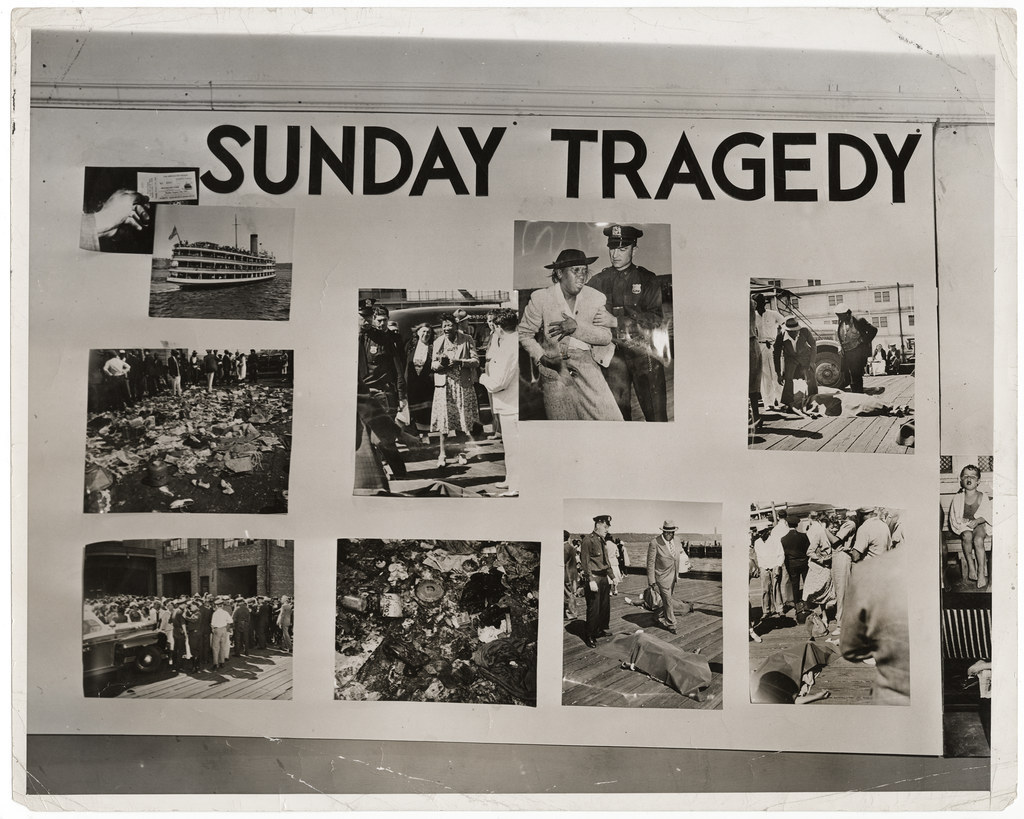
Weegee's murder victims, drunks, partiers, fires, reckless drivers, rescue workers, petty criminals, and cops fit the bill.
A blanket-covered body of a woman trampled to death in the boat stampede. 18 August 1941.
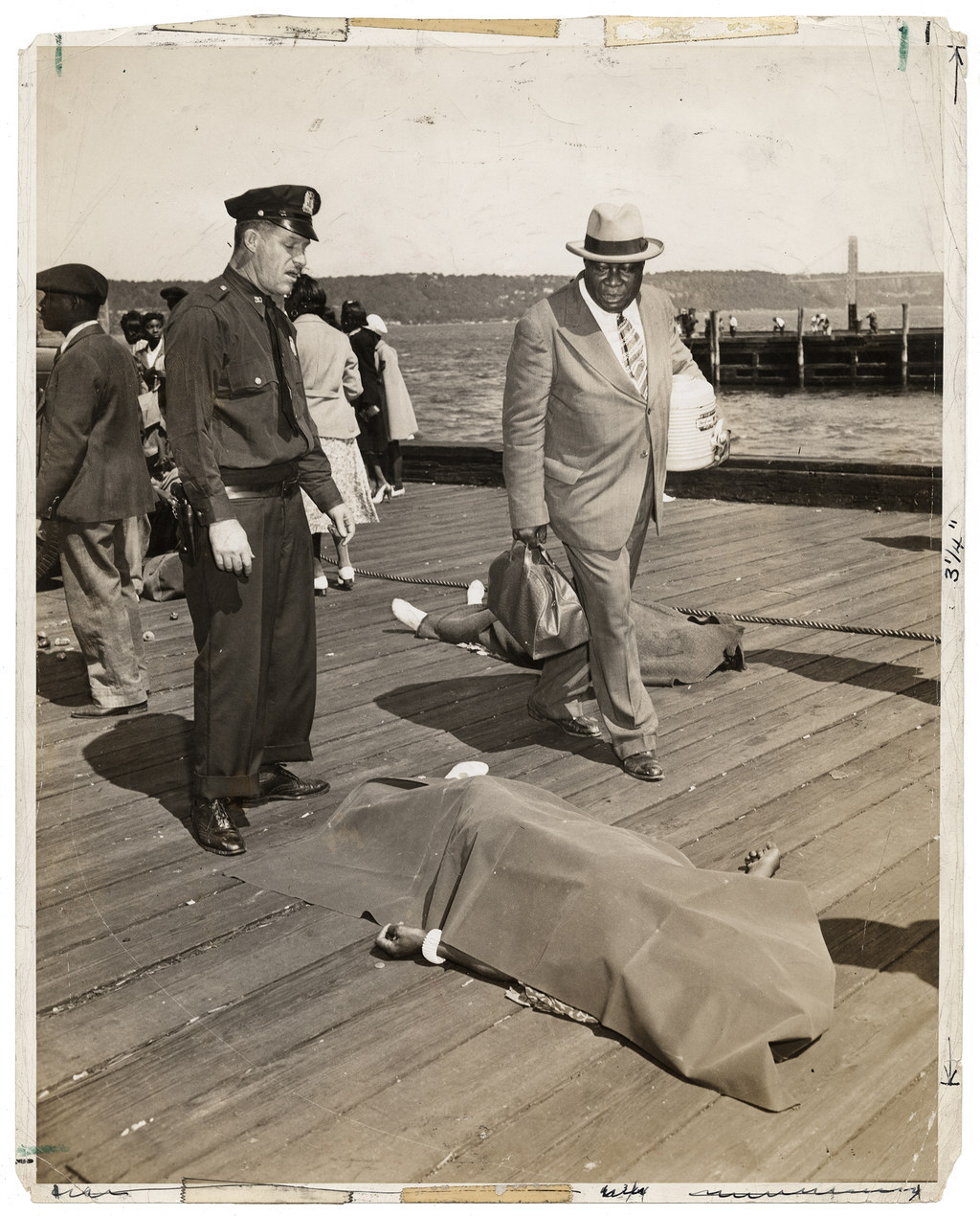
He had two shows: back-to-back exhibitions of his work in the League's headquarters on East 21st Street. The second time round, all new murders.
The sign reads: "Due to an increase in murders, the Photo League presents a 2nd Edition of Murder Is My Business by Weegee". September 1941.
